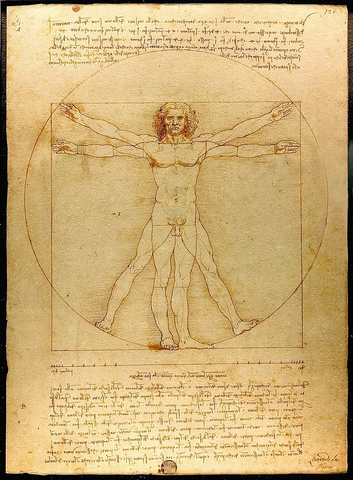What is proportion in art? It is a principle that determines the relationship between elements in an artistic work. It can be applied to any type of art, and it is important to any artist – no matter whether they create abstract or hyper-realistic pieces. In this article, we look closer at the role of proportion and scale in art. If you want to learn more about them, read on!
Proportion in Art: Definition
Let’s start with the definition of proportion in art. This is the relationship between elements in one artistic composition. Proportion can be used to achieve a realistic image or to adapt it to a given abstract style.
Proportion in art is applied by all kinds of artists and in different types of fine arts. Take, for instance, caricatures – even though they are not created to resemble the real world, proportion is important in them, as it is responsible for creating the satirical side of the pieces. This proves that no matter what style you create your works in, proportion is vital to achieving the desired effect.
Proportion and Scale in Art
In art, proportion is often mistaken for scale. However, these are two completely different principles.
While proportion deals with the relation in size between two elements of the same object, the scale takes it further and refers to the relation between two different objects. Typically, this refers to the size of the whole artwork in comparison to the viewer’s body, though it might also be used to describe different visuals in a single artwork.
Examples of Types of Proportion in Art
As we have mentioned before, proportion is important for any kind of art piece – no matter whether it is an abstract painting or a realistic photograph. Therefore, artists adopt a variety of proportions in their art, so let’s take a look at some examples of them.
Standard Proportion
Standard proportion in art refers to works that maintain the proportions known from real-life objects. It’s mostly adopted by those embracing realist art. The most famous example of standard proportion in art is The Vitruvian Man by Leonard Da Vinci, which depicts the ideal proportions of a human body.

Altered Proportion
Altered proportion is another example of this principle used in practice. This particular approach involves changing the real-life proportions to achieve a certain effect or style. Hence, it is most commonly used by abstract artists, though it’s not as abstract as the out-of-proportion approach.
Hierarchical Proportion
Hierarchical proportion is an interesting instance in art where proportions are used to highlight the different levels of an art piece. It can be used to, for instance, distinguish the social classes or power of the people in a painting or simply to attract the viewer’s attention to the most important part of the work.
Out of Proportion
Out of proportion is an approach where elements of an artwork are intentionally…totally out of proportion. This entails combining really small elements with extremely large ones despite only slight differences in their real-life proportions.
Out-of-proportion is quite an abstract approach, one that you’re likely to find in, for instance, collages. However, one could argue whether the aforementioned caricatures fall into this group as well, as they balance somewhat between this and altered proportions.
Why Is Proportion in Art Important?
As you can see from the examples, proportion can play quite a few roles in an artwork. No matter the art movement, it is crucial to achieve the effect desired by the artist. Therefore, let’s briefly explore what purpose it may serve.
- Proportion helps recreate the real world – maintaining the right proportions is crucial in realist art, as it’s what makes the artwork true to reality.
- Proportion builds up the composition – as in the example of hierarchical proportion, it can help to distinguish the different layers of the work and attract the viewer’s attention.
- Proportion is a form of expression – many out-of-proportion pieces aren’t such without a reason – the distorted proportion is there to underline a certain message that these works convey.
- Proportion evokes feelings in the viewer – take the caricatures: they are supposed to be satirical and funny, and the proportion is the way to achieve this effect.
The Takeaway
What is proportion in art? It’s an important principle that refers to the relationship between the elements of a single object. It is used to achieve a plethora of effects, from creating realistic artwork to making a certain impact on the viewer or drawing their attention to the particular parts of an art piece. Proportion is often mistaken for scale, which is the relation between two objects, typically the work and the viewer. Nevertheless, both of them are vital in any kind of art.
You might also read: What Is Composition in Art?
